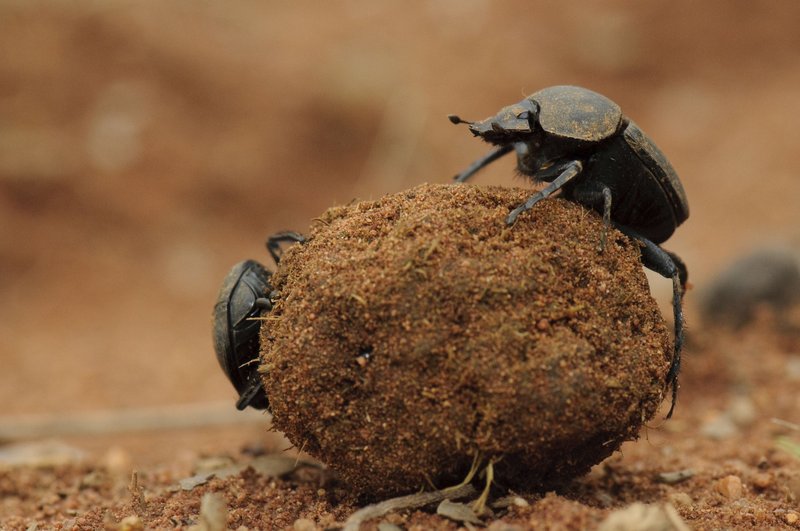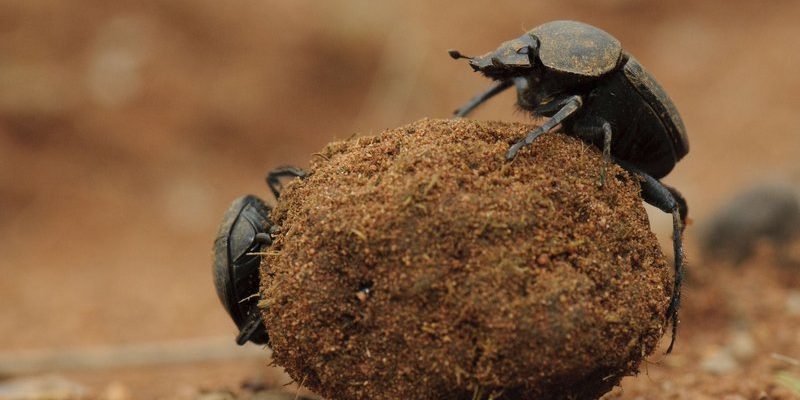
Understanding dung beetles is like diving into a world of unexpected heroes. Imagine a tiny superhero, swooping in to clean up messes we didn’t know we needed cleaned up. They help decompose waste, enrich the soil, and even control pests. But, just like any superhero, they have their fair share of misconceptions. So, let’s dig in and bust some of those myths about dung beetles to uncover their true nature!
Myth 1: Dung Beetles Only Eat Dung
You might think that dung beetles are strictly devoted to a diet of feces, but that’s not the whole picture. Sure, dung is their primary food source, but they also munch on other organic materials. This includes decaying vegetation and even carcasses.
Here’s the thing: dung beetles are scavengers. They thrive on nutrients found in waste, which helps them grow and breed. Plus, the dung they consume isn’t just any type; they tend to prefer fresh dung over older, dried-out sources. This diet is what makes them so important for breaking down waste and returning nutrients to the soil.
If you ever find yourself in a garden, take a closer look; you might find these beetles feasting on more than just dung. They play a vital role in the cycle of life, contributing to healthier soil and thriving ecosystems.
Myth 2: All Dung Beetles Roll Dung
You might envision dung beetles rolling balls of poop like miniature farmers, but not all of them engage in this activity. In fact, there are several types of dung beetles with different behaviors. Some species just bury dung right where they find it without the rolling action. Others prefer to stay close to their food source and don’t bother with transporting it at all.
Let me explain: the rolling behavior, while iconic, is just one aspect of their fascinating lives. The ones that roll dung usually do so to protect it from competitors and to have a stable food source for later. Others dig down into the ground to create a safe space for their larvae. This diversity in behavior helps them adapt to different environments and remains vital for the ecosystem.
So, next time someone mentions dung beetles rolling poop, you can confidently share that it’s not the only game in town!
Myth 3: Dung Beetles Are Dirty Creatures
It’s easy to think of dung beetles as dirty bugs just because of their association with dung. However, they play a crucial role in cleaning up our environment. By breaking down animal waste, they help prevent the spread of parasites and bacteria, which can be harmful to other animals and humans.
Honestly: these beetles contribute to healthier ecosystems by promoting nutrient cycling in soil. Their actions not only keep the environment cleaner but also encourage plant growth, making them friends of farmers and gardeners alike. Think of dung beetles as nature’s janitors, working hard behind the scenes to keep things tidy.
So, rather than viewing them through a lens of disgust, appreciate the hard work they do to maintain a balanced ecosystem.
Myth 4: Dung Beetles Are Pests
You might be surprised to learn that dung beetles are not pests at all! In fact, they are entirely beneficial. While it’s true that they thrive on animal waste, their presence can significantly improve soil quality and reduce harmful pests.
Here’s the thing: when dung beetles break down manure, they help enhance nutrient availability in the soil, which benefits plants. This naturally reduces reliance on chemical fertilizers, promoting healthier agricultural practices.
When dung beetles are present, you have a natural pest control team. They reduce flies and other insects that thrive on animal waste, keeping your environment more pleasant and healthy. Far from being a nuisance, they are a vital part of the ecosystem.
Myth 5: Dung Beetles Only Exist in Rural Areas
Many people assume dung beetles can only be found in remote fields or farms, but they are surprisingly adaptable creatures. You can find them in various habitats, including urban settings. As long as there’s some organic waste nearby, you may spot them in city parks, gardens, and even backyards.
You might be wondering, why are they so flexible? Dung beetles have adapted to find food in different environments. They can thrive in both rural and urban landscapes, provided the conditions are right. So, the next time you’re outside, keep an eye out; you might just see one scuttling around, busy with its important work.
Myth 6: Dung Beetles Are All the Same
The world of dung beetles is diverse, with over 8,000 species identified worldwide. Each species has unique traits, behaviors, and ecological roles. Some species are small, while others can be strikingly large. They can vary in color, shape, and social behavior, making them incredibly fascinating insects to study.
Let me explain: while they all share a similar diet, their ways of life can differ widely. Some species are solitary, while others live in groups. This variation allows them to adapt to different habitats and compete for resources effectively.
By understanding the diversity within dung beetle species, we appreciate their roles in our ecosystems even more. Each species plays a unique part in keeping nature balanced.
Dung beetles might not be the most glamorous creatures in the animal kingdom, but they are among the most important. By busting these common myths, we can better appreciate their role in maintaining a healthy environment. They’re not just rolling poop; they’re working tirelessly to improve soil quality, control pests, and recycle nutrients.
So next time you hear someone mention dung beetles, remember that they’re nature’s little champions. Let’s give a round of applause to these hardworking insects, and perhaps even consider how we can support their presence in our gardens and communities. After all, the more we understand and appreciate these creatures, the better we can protect the delicate balance of our ecosystems.

